Table of Contents[Hide][Show]
Zucchini (or “courgette” in British English) is one of our favorite foods here at Diabetes Meal Plans.
Not only is it very easy to grow and relatively inexpensive, but it is also a very mild tasting versatile vegetable that can be incorporated into many dishes.
Zucchini is a type of summer squash, a very low-starch vegetable, which can be eaten liberally without negatively impacting your glucose levels. Zucchini is most often varying shades of green, but there are yellow and orange varieties as well.

Zucchini Nutrition Facts
- Zucchini is low in calories (35 per cup) and carbohydrates (3.5 grams per cup)
- Zucchini has a very low glycemic index of 15
- Zucchini is a good source of carotenoids
- Zucchini provides antioxidants
- Zucchini provides many vitamins and minerals key to metabolism
- Zucchini contains nutrients in the flesh AND the skin and seeds
Zucchini (1 medium raw, 196 g)
Nutrition Facts
Calories: 33 | Total Fat: 0.6 g | Sat Fat: 0.1 g | Poly: 0.1 g | Mono: 0.02 g | Total Carbs: 6.1 g | Fiber: 2.0 g | Net Carbs: 4.1 g | Protein: 2.3 g
Minerals
Calcium: 31 mg | Iron: 0.73 mg | Magnesium: 35 mg | Phosphorus: 74 mg | Potassium: 512 mg | Zinc: 0.63 mg
Vitamins
Vitamin C: 35.1 mg | Thiamin: 0.088 mg | Riboflavin: 0.184 mg | Niacin: 0.884 mg | Vit B6: 0.319 mg | Folate: 47 ug | Vit B12: 0 mg | Vit A: 392 IU | Vit E: 0.24 mg | Vit D: 0 IU | Vit K: 8.4 ug
Zucchini (1 cup cooked, 180 g)
Nutrition Facts
Calories: 27 | Total Fat: 0.6 g | Sat Fat: 0.1 g | Poly: 0.2 g | Mono: 0.05 g | Total Carbs: 4.8 g | Fiber: 1.8 g | Net Carbs: 3 g | Protein: 2 g
Minerals
Calcium: 32 mg | Iron: 0.67 mg | Magnesium: 34 mg | Phosphorus: 67 mg | Potassium: 475 mg | Zinc: 0.59 mg
Vitamins
Vitamin C: 23.2 mg | Thiamin: 0.063 mg | Riboflavin: 0.043 mg | Niacin: 0.918 mg | Vit B6: 0.144 mg | Folate: 50 ug | Vit B12: 0 mg | Vit A: 2011 IU | Vit E: 0.22 mg | Vit D: 0 IU | Vit K: 7.6 ug
Health Benefits of Zucchini
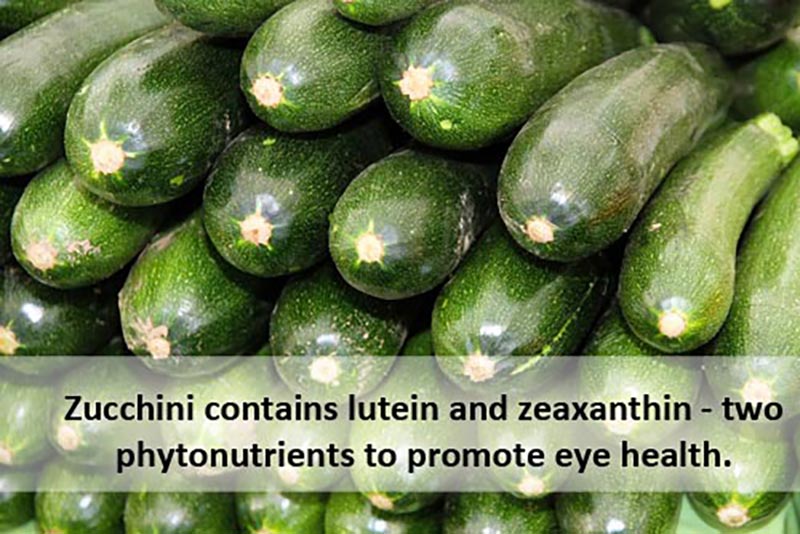
- B vitamins as well as Zinc and Magnesium (all present in summer squash) are key to hormonal regulation and blood sugar stability.
- Fiber is important for bowel health, lipid metabolism and blood sugar balance.
- Manganese (excellent source) and Vitamin C (good source) along with carotenoids such as lutein and zeaxanthin provide antioxidants that protect against oxidative cell damage.
- Potassium helps with reduction of blood pressure, maintenance of fluid balance, and protects against heart and kidney disease.
Research on Zucchini Specific to T2 Diabetes
Certain components in summer squash have been shown to have a lipid lowering, anti-obesity effect in animal studies.
A study measuring the effects of adding peels from squash along with glucose to diets of diabetic mice showed a reversal in negative glucose impact.
Anti-cancer and anti-inflammatory components have been identified in summer squash.
Points for Consideration
While zucchini is generally safe, it does belong to a plant family that can contain toxins called cucurbitacins which act as a defense mechanism for plants. However, varieties grown today are bred to contain trace/low levels of the toxin and are not harmful to humans. Additionally, the toxin is extremely bitter-tasting so if present, it will be detectable. As long as your zucchini tastes fine, you have no need to be concerned.
In addition, zucchini does absorb a lot of pesticides, it is wise to scrub the skins and/or rinse well with vinegar solution before eating, unless you purchase it organic.
Zucchini and Diabetes Conclusion
In short, zucchini is a great low calorie, low carb op
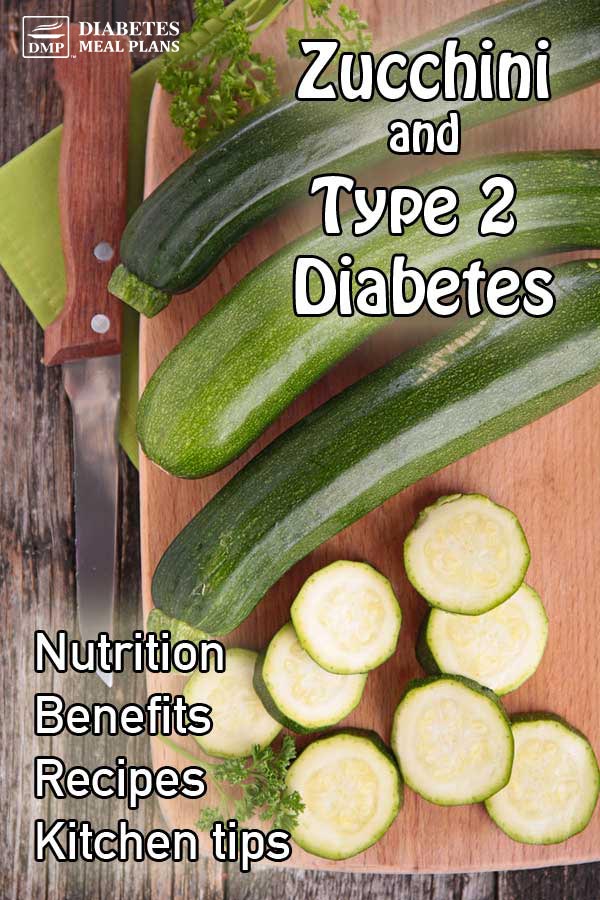
tion to include as a regular food choice in a diabetic diet.
Zucchini in the Kitchen
Selection
Choose zucchini that is heavy for it’s size, unblemished with firm skin and bright color.
Try to avoid any soft or dark spots. Different sizes are better for different dishes. When making zucchini lasagna or noodles, it’s nice to have the big ones, but for munching on slices or throwing in dishes the smaller ones are nice and have a bit more flavor. Medium sized ones are great for grilling.
The really enormous ones (ie. >1.5 feet and/or 6” diameter) are often very woody and seeds are grainy so you may only be able to use the flesh from those.
Storage
Zucchini should be kept refrigerated in crisper drawer until ready to use, then washed just prior. A diluted vinegar solution can get rid of a significant amount of the pesticides sprayed.
Zucchini will keep for about 7-10 days. If they are a bit soft, use in soups, slow cooker meals or casseroles. And if the skin is a bit spotted, simply peel them and use anyway.
Zucchini can also be frozen but freezing will affect the texture quite a bit so should only be used in soups, casseroles, or as a puree at that point.
Uses
Zucchini can be:
- Sliced very thinly and baked as chips
- Spiralized and used as a noodle and pasta substitute
- Sliced length ways and used as a lasagna noodle substitute
- Diced and added to stir fries
- Sliced or diced and seasoned for grilling
- Grated and added to salads
- Or simply eat the zucchini raw
Zucchini can also be pureed and added to just about anything–smoothies, soups, casseroles, chili, etc.
Cooking
- Steaming: Zucchini (sliced or spiralized) can be steamed for 3-4 minutes.
- Boiling: Zucchini can be boiled 2-3 minutes, although there will be more nutrient loss and the texture will be mushy.
- Sauteed: Zucchini can be sauteed in broth or sauces.
- Grilled: Zucchini can be brushed with olive oil, topped with spices if desired and grilled 5-7 minutes.
- Microwaved: Zucchini can be microwaved, covered 4 minutes until softened.
- Baked: Large zucchinis can be stuffed with other vegetables, meat and cheese as “zucchini boats” and baked in the oven 30-50 minutes depending on the size and fillings. Additionally, zucchini can be thinly sliced and baked as ‘chips’ at 350F/ 180C for 15-20 minutes until crispy. Or slice length ways, drizzle with olive oil and bake for 20 minutes to include with a roast dinner.
- Frying: Zucchini can be added to stir fries (a common ingredient in ‘Ratatouille’); since they are very delicate, they should be added right at the end as they will only take a few minutes to cook through.
Note: If using as a pasta substitute, it helps to lightly salt the sliced pieces and let them ‘sweat’ out much of the water, then blot it with a paper towel.
Zucchini Kitchen Utensils
One of the most essential items is a Paderno Vegetable Spiralizer, to make zucchini noodles. A set of sharp knives makes your kitchen handy work easier. Keep a good grater handy because zucchini is perfectly grated in salads, stews, soups and other dishes. For a bit of fun, use a crinkle cut knife. And always have baking trays and a tiered steamer to steam your veggies. It’s the best way to eat them!
Cutting Techniques
Zucchini is very easy to cut. Simply slice into rounds with a sharp knife in a downward motion keeping your knuckles and fingers wedged against the top of the blade to avoid cutting yourself.
Here are a variety of demonstration videos.
How to slice and chunk zucchini
How to peel and slice
How to cut zucchini for grilling
How to julienne and dice zucchini in fine pieces
How to cut thin layers of zucchini
Zucchini Recipes
Chicken Pesto Zoodles
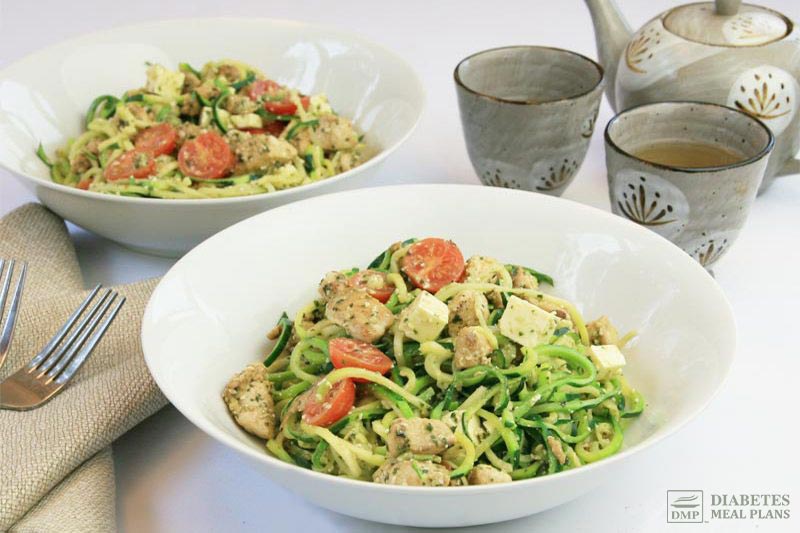
CLICK HERE for the full recipe
Beef Basil Noodles
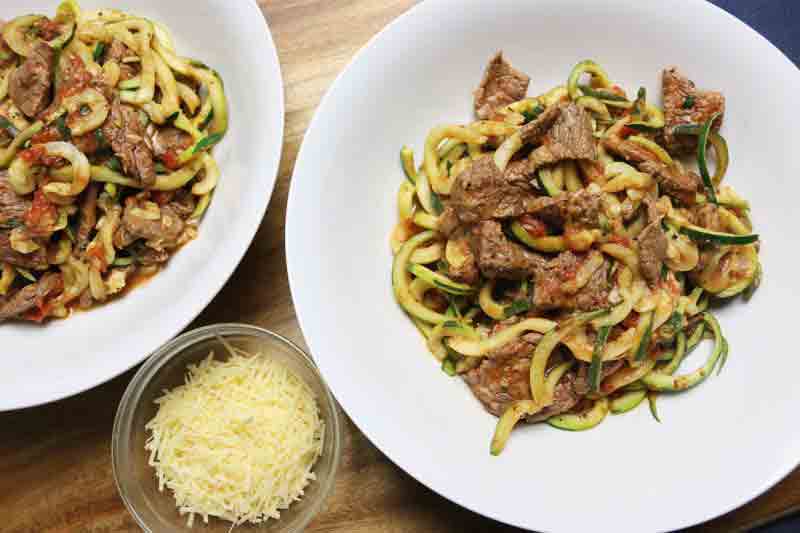
CLICK HERE for the full recipe
Zucchini Pizza Boats
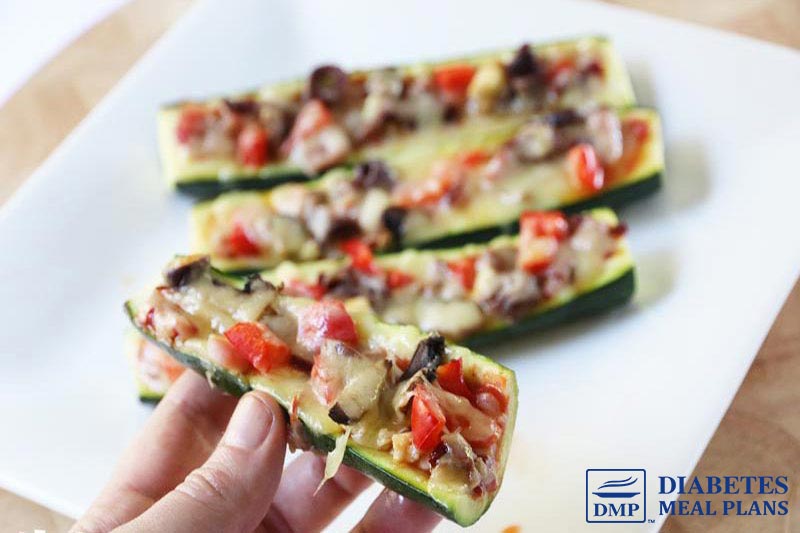
CLICK HERE for the full recipe
Cheesy Vegetable Bake

CLICK HERE for the full recipe







Merle iraola
I never eat zucchini before , but I want star eat now please tell me how cook this
Emily - Dietitian (MS, RD)
In addition to the recipes include in this article, there are a few other super easy ways to prepare! My “go-to” cooking method is to toss sliced succhini with olive oil and minced garlic, then roast on a cookie sheet in the oven (set at about 350F) for 30 minutes or so.
Zucchini does not have a strong flavor, so it’s very easy to add to most dishes, such as a veggie stir-fry or casserole bake. It can certainly be chopped up raw and added to salads if you like the taste of it that way as well.
Bruce
We do the noodle thing, also do a boat but with cabbage roll filling. BTW, the glass of red is working, 4.5 yesterday am but had a restaurant dinner, 5.2 this morning
Jedha
Noodles and boats are the awesome thing about zucchini. Glad to hear it’s working for you Bruce. It works for some people, while for others it doesn’t.